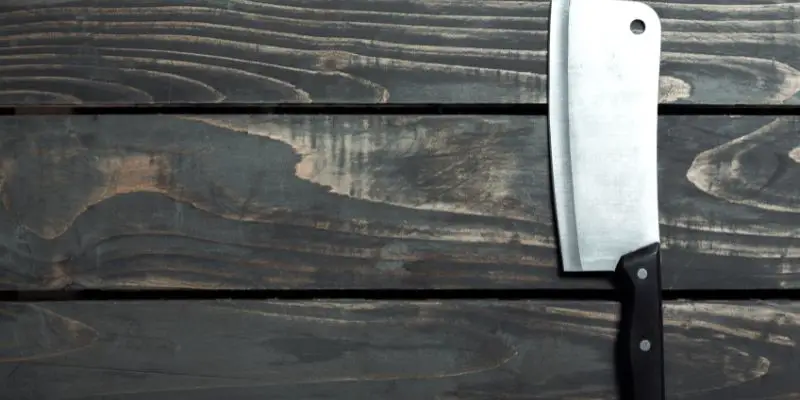To distress wood, start by sanding the surface to remove any finish and roughen the wood. Then use tools like hammers, chains, and screws to create dents and scratches, and apply a wood stain or paint for an aged look.
Distressing wood adds character and unique charm to furniture and decor pieces. This technique is popular in rustic and farmhouse-style design, giving a weathered and worn appearance to new wood. Whether you’re updating old furniture or creating a vintage-inspired piece from scratch, distressing wood is a simple and effective way to achieve a timeworn aesthetic.
With the right tools and techniques, you can easily distress wood to enhance its visual appeal and create a one-of-a-kind, aged finish.
Distressing Wood For Authentic Charm
When it comes to creating an authentic and vintage look for your furniture or decor, distressing wood can add a touch of timeless charm. Whether you’re aiming for a rustic farmhouse feel or a shabby chic look, learning the art of distressing wood can elevate your DIY projects while infusing character and warmth into your living space.
Understanding The Basics Of Wood Aging
If you want to achieve a natural, aged appearance when distressing wood, it’s essential to understand the basics of wood aging. Aging wood naturally occurs through exposure to the elements, such as sunlight, humidity, and temperature changes. During this process, the wood’s surface is weathered, resulting in a subtly worn and antique look. To replicate this effect, various distressing techniques can be applied to new or reclaimed wood, creating a stunning vintage appeal.
Recognizing Suitable Wood Types For Distressing
When choosing wood for distressing, it’s crucial to select suitable wood types that will respond well to the aging process. Softer hardwoods, such as pine, poplar, or cedar, are ideal for distressing as they are easier to work with and more receptive to distressing techniques. Conversely, hardwoods like oak, cherry, or mahogany can also be distressed but may require more effort due to their dense nature. The right wood choice can significantly impact the overall outcome of your distressing project, ensuring that the wood embraces the distressed effect beautifully.
Choosing Your Tools And Materials
When it comes to distressing wood, selecting the right tools and materials is essential to achieve the desired weathered look. Choosing the appropriate tools and materials helps in creating a unique distressed finish that adds character and charm to your wood projects. From sandpaper grit to wood stains, each aspect contributes to the overall outcome. In this section, we will explore the essential tools for distressing wood and the significance of selecting the right sandpaper grit and wood stains.
List Of Essential Tools For Distressing Wood
When distressing wood, having the right tools on hand is crucial for achieving an authentic aged appearance. Below is a list of essential tools that are commonly used for distressing wood:
- Circular saw
- Hand sander
- Hammer
- Wire brush
- Chisel
- Nails and screws
- Chain
- Bradawl
Each of these tools serves a specific purpose in distressing wood, allowing for various techniques to be implemented effectively.
Selecting The Right Sandpaper Grit And Wood Stains
The choice of sandpaper grit and wood stains can significantly impact the distressed wood’s final look. When distressing wood, it is crucial to select the appropriate sandpaper grit and wood stains for the desired effect.
When it comes to sandpaper grit, selecting the right grit is important. Coarse grit sandpaper, such as 60-80, is ideal for removing material and creating deeper distressing, while medium grit, around 120-150, is suitable for refining the distressing and smoothing the surface. Fine grit, 180-220, can be used for additional smoothing and preparing the wood for staining.
Similarly, choosing the right wood stains is essential for achieving the desired aged appearance. Opt for wood stains that complement the wood’s natural grain and mimic the effects of aging. Additionally, consider experimenting with layering different stains to achieve a deeper, multi-tonal distressed look.
Prepping Wood For The Distressing Process
When distressing wood, prepping the wood surface is a crucial step to ensure the distressed finish looks authentic and professional. Prepping the wood involves cleaning and sanding the surface, as well as taking safety measures before beginning the distressing process. By following these steps, you can ensure a smooth and successful wood distressing project.
Cleaning And Sanding The Wood Surface
Before distressing the wood, it’s important to clean the surface thoroughly to remove any dirt, grease, or debris. This can be done using a damp cloth and a gentle wood cleaner. Once the surface is clean and dry, sanding it is essential to create a smooth and even base for the distressing process. Use medium-grit sandpaper to remove any existing finish or imperfections on the wood. Be sure to sand along the grain of the wood to avoid scratches or uneven patches. After sanding, wipe away any dust with a clean cloth to ensure a pristine surface for distressing.
Safety Measures Before Starting The Distressing
- Wear appropriate safety gear such as goggles, gloves, and a dust mask to protect yourself from wood dust and chemicals used for cleaning and distressing.
- Work in a well-ventilated area to minimize exposure to fumes from cleaning solutions and distressing products.
- Read and follow the instructions on any cleaning and distressing products to ensure safe and effective usage.
By adhering to these safety measures, you can protect yourself while prepping and distressing the wood, creating a safe and enjoyable DIY experience.
How To Distress Wood: Easy Techniques
Distressing wood is a popular technique that can add character and depth to furniture and decor. There are several easy techniques that can be used to distress wood, each offering a unique way to create a weathered, antique look. Let’s explore the step-by-step process of distressing wood using some simple and effective methods.
Applying Paint And The Dry-brushing Method
When it comes to distressing wood, using paint is a versatile method that allows for creativity. The dry-brushing technique involves applying a small amount of paint to a brush and then removing most of it by stroking it on a paper towel or cloth. Once the brush has minimal paint, lightly stroke it over the surface of the wood, emphasizing the edges and corners. This technique creates a subtle, worn appearance, perfect for achieving a distressed look.
Incorporating The Wood Denting And Scratching Technique
If you want to add authentic wear and tear to your wood, the denting and scratching technique is essential. Use various tools such as a hammer, screwdriver, or even a chain to gently create intentional dents and scratches on the wood surface. This method adds a rustic, aged appearance, providing a truly distressed effect.
Strategic Sanding For A Naturally Worn Look
Sanding is a fundamental technique for distressing wood. By focusing on areas that naturally receive wear and tear, such as edges, corners, and raised surfaces, you can create an authentic, naturally worn appearance. Use different grits of sandpaper to achieve varying levels of distress, and always sand with the grain of the wood to maintain a cohesive finish.
Adding Stains And Finishes For An Aged Effect
To elevate the distressed look, consider adding stains and finishes to the wood. Using a darker stain can accentuate the distressed areas, creating depth and richness. Additionally, applying a matte or satin finish can enhance the aged effect, providing protection while maintaining the weathered appearance.
Advanced Distressing Techniques
Distressing wood is an art form that allows for creativity and customization. Advanced distressing techniques take this art to the next level, offering unique ways to achieve a weathered, vintage look that adds character and charm to any piece of wood. In this section, we’ll explore two advanced distressing techniques that go beyond the basics: combining staining with paint for layered distressing and using unconventional tools for unique distressing effects.
Combining Staining With Paint For Layered Distressing
One advanced technique for distressing wood is to create a layered effect by combining staining with paint. This method involves applying wood stain to the bare wood, allowing it to penetrate the grain for an organic, aged look. Then, paint with a contrasting color is applied over the stained surface. Once the paint has dried, distressing can be done by sanding the edges and high points of the wood, allowing the stained layer to show through, creating depth and character.
Using Unconventional Tools For Unique Distressing Effects
Another advanced technique involves thinking outside the box and using unconventional tools to achieve unique distressing effects. Instead of traditional sandpaper, consider using items like chains, wire brushes, or even screws to create distinct marks and textures on the wood surface. These unconventional tools can produce fascinating patterns and irregular distressing that add an artistic touch to your project.

Frequently Asked Questions On How To Distress Wood
How Do You Make Wood Look Distressed?
To distress wood, sand it to remove the finish, then create indentations and marks with tools. Apply a base coat of paint, sand again, and add a top coat. Use sandpaper and steel wool for a weathered look. Finally, apply a sealant to protect the distressed finish.
How Do You Paint Wood To Make It Look Old?
To paint wood to look old, use a base coat, sand, apply a darker top coat, and sand again to reveal the base coat. Additionally, use a wood aging solution to add character and distress the wood for a weathered appearance.
How Do You Distress Wood With Different Colors?
To distress wood with different colors, sand the wood and apply a base stain. Once dried, lightly sand the surface and apply a second stain. Sand again to reveal the base color, then seal with a clear coat. Experiment with different colors for unique effects.
How Do You Rough Up Wood Before Painting?
Before painting, rough up wood with sandpaper to create a smooth surface for the paint to adhere to. Start with coarse-grit sandpaper and finish with fine-grit for best results. Sand in the direction of the wood grain to avoid damaging the surface.
Conclusion
Transforming plain wood into a beautifully distressed piece can add character and charm to your home decor. By following these simple techniques, you can achieve a stunningly aged appearance. With a little patience and creativity, distressing wood can be a fun and rewarding DIY project for anyone.
Embrace the imperfections and enjoy the unique beauty of distressed wood in your home.


